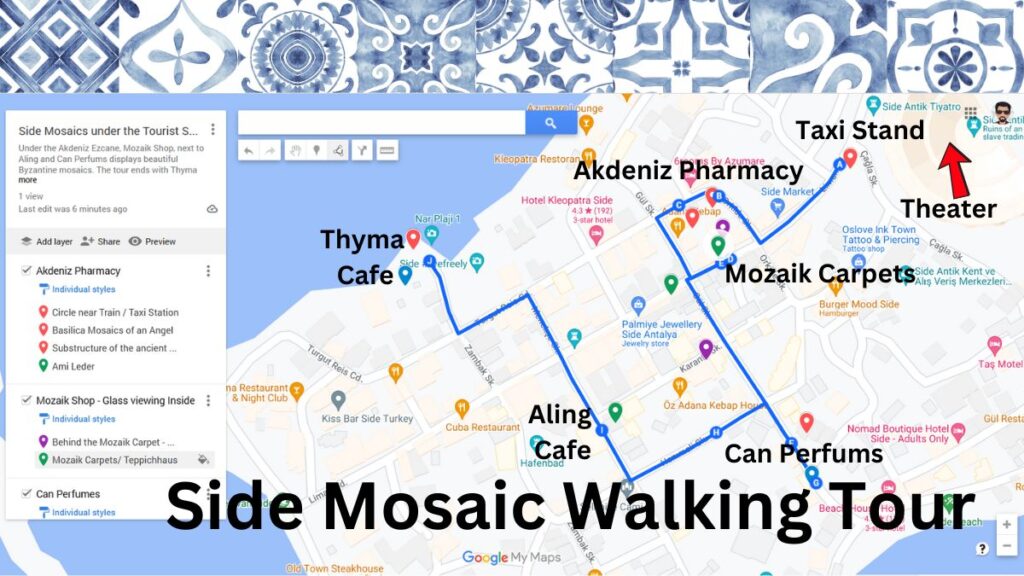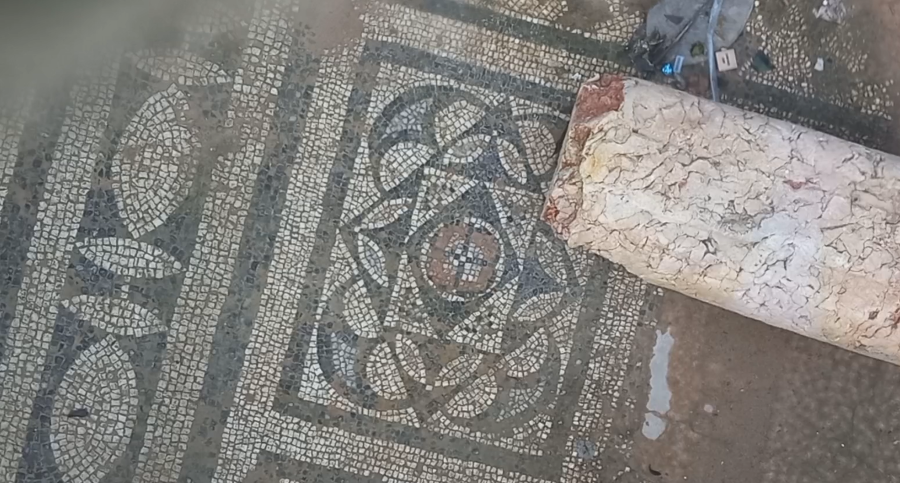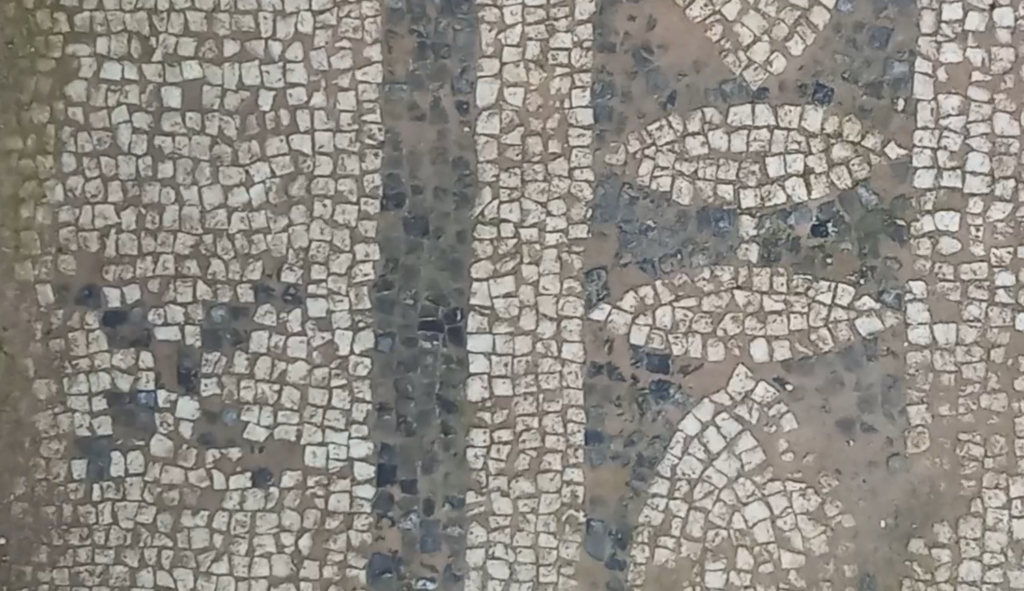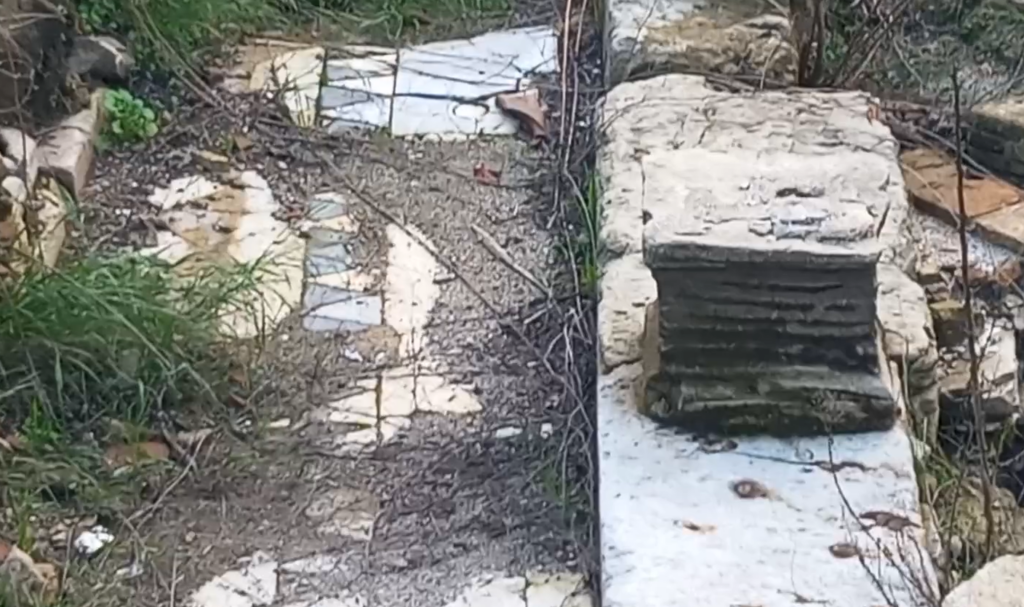- The Byzantine Episcopal Influence on the History of Side, Pamphylia
- Exploring Side, Pamphylia Hidden Byzantine Monuments
- The Lost Metropolis Episcopal Palace in Side, Pamphylia
- Discovering the Repurposed Chapel in Side Open Air Museum
- The Hidden Mosaics among the Side Market Shops – Part one
- The Hidden Mosaics among the Side Market Shops – Part Two
- The Hidden Mosaics among the Side Manavgat Shops – Part 3
- Hidden Things From Side’s Fountain to Grand Theater
- Hidden Crosses in the Side Archeology Museum
- Side’s Fascinating Basilica near Apollo Temple
- Analyzing the 12 churches and chapels of Side, Pamphylia
- Analyzing the Synagogue in Side, Pamphylia
In Part Two of the Mosaic walking tour, we will see more amazing mosaics as we look below the surface in the town of Side in Manavgat—the details about the mosaics and tiles near Can Parfums, Chill Breeze Coffee Shop and Mondo Bazaar.

Mosaics near Can Perfums (Map F)

The image above displays a cross in the center of the diamond design, reminding me of God’s love for the world (John 3:16). Some thought-provoking hidden mosaics come alive under these glass frames.

The “X” or black cross on the side is found in many churches and on typical civic street mosaics in other Byzantine sites (e.g. Ephesus and Perge). The artisan could have utilized the patterns he learned, including these images. Yet, the “X” also stood for the name of Christ.
Chill Breeze Coffee (Map G) Substructure
Many places in this area show substructures, but a hamam support is revealed, and mosaics bear the above eye-shaped images. Since most of you will stop for a coffee here,I included this site.

Ancient Boulevard of Side (H)
Up from the Coffee shop and near Mondo Bazaar, a fascinating glimpse of the ancient colonnade exists. The Roman colonnade depicted the city’s core, promoting the political and religious ideas of the society. In Side, the underground colonnade directly connected the social theater near the main entry with the religious center, which boasted multiple secular temples and a Byzantine church.
Hidden mosaics and boulevards provide striking insights into the ancient world, where space and imagery were powerful expressions of belief. Today, we don’t just admire their beauty; we must consider what these mosaics evoke. When I examine them, it’s clear that faith pulses through the art and creativity of the artisans. While it’s true that many worshiped Roman gods, the intentional placement of crosses and spiritual images profoundly influenced both the craftspeople who created them and the onlookers who appreciated their work.
The Boulevard leads to the religious area. Ancient Side, like Ephesus and ancient Smyrna (Izmir), demonstrates the mixed ideas that pass through port cities. Travelers and visitors came and found the religious system they were used to. However, the mosaics in the town show the dominance of the Christian merchants (at least during the time they were made) with consistent non-Roman god designs and cross-like patterns.
The tour continues with part three.
[…] The Hidden Mosaics among the Side Market Shops – Part Two […]